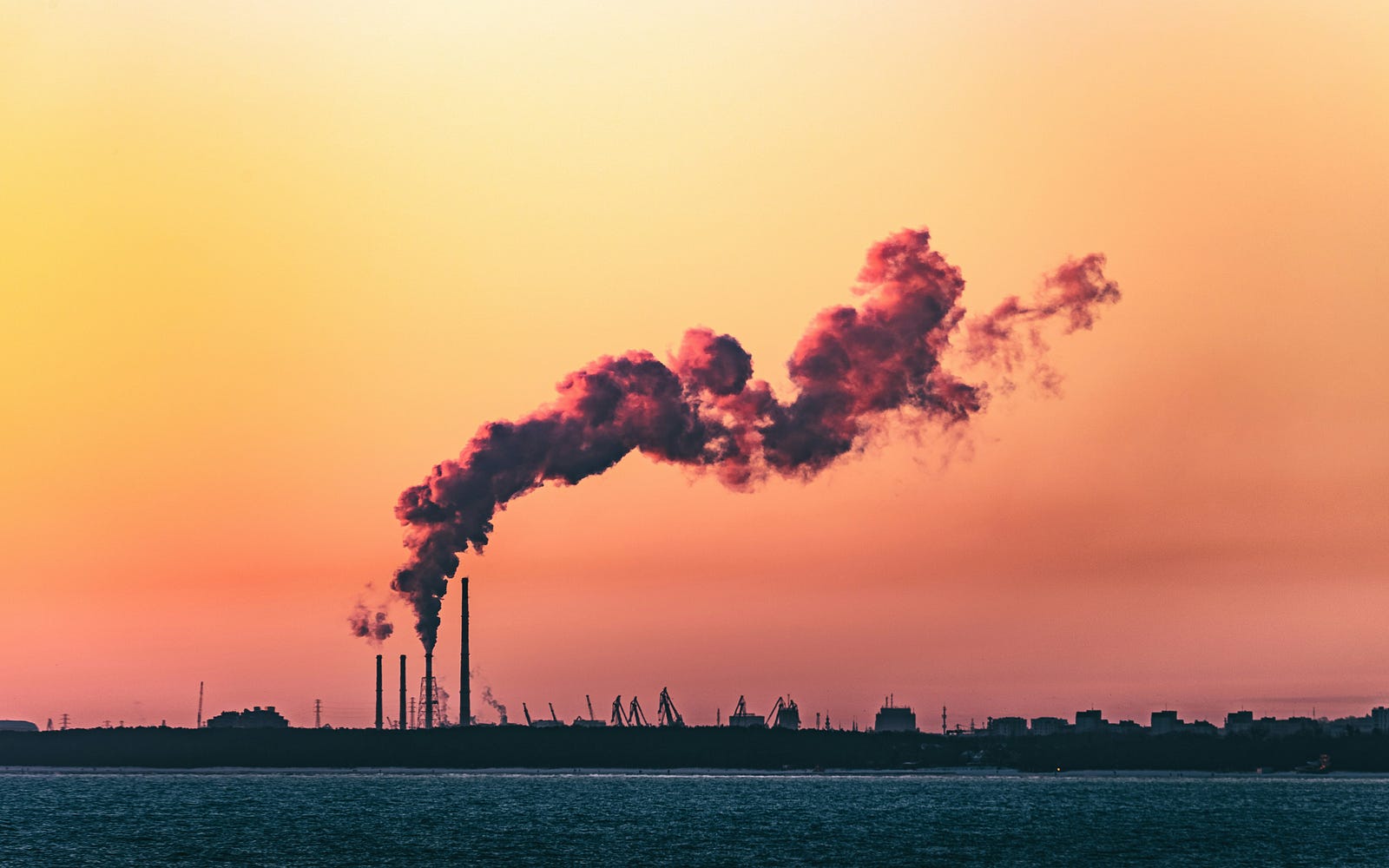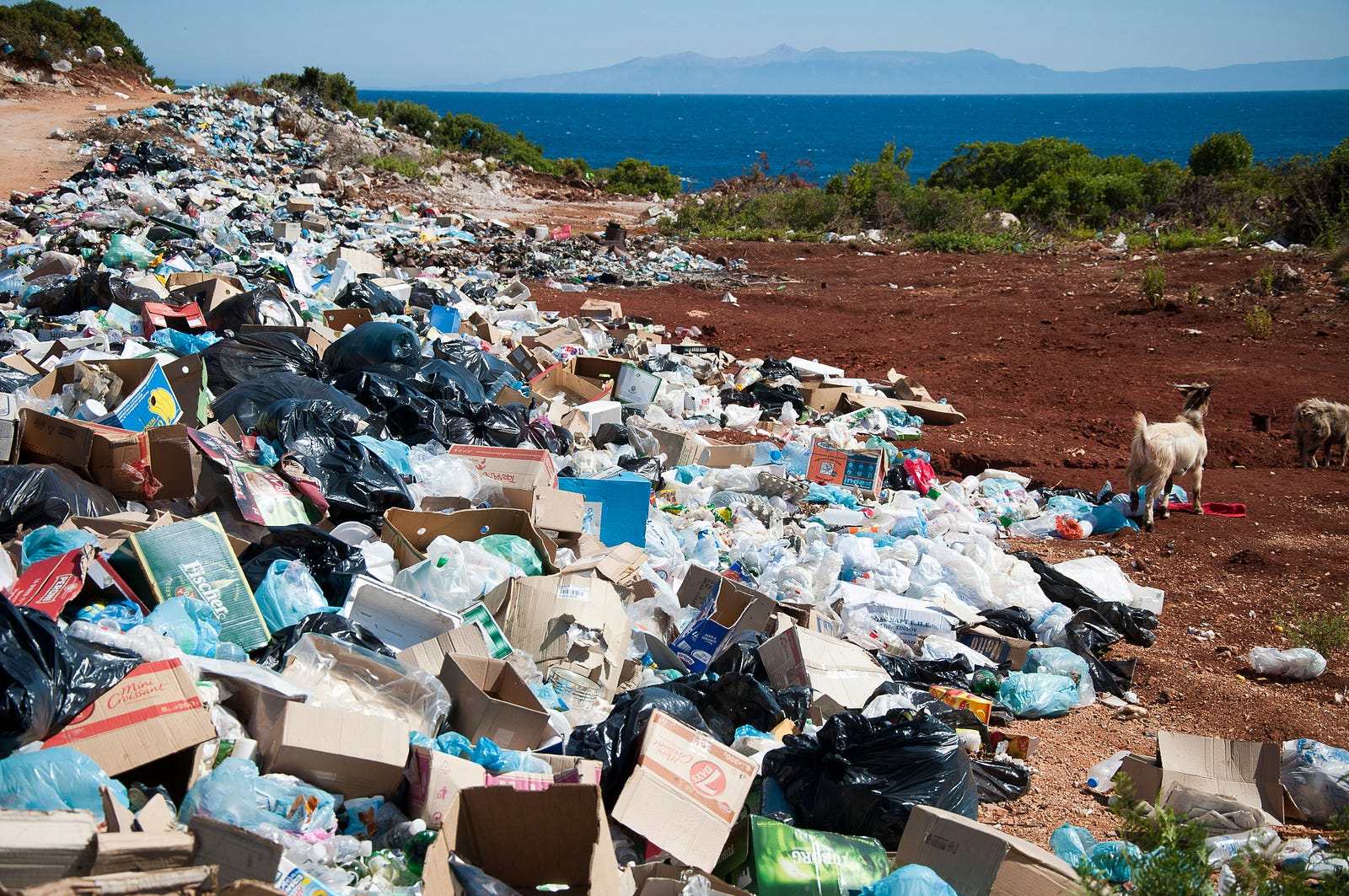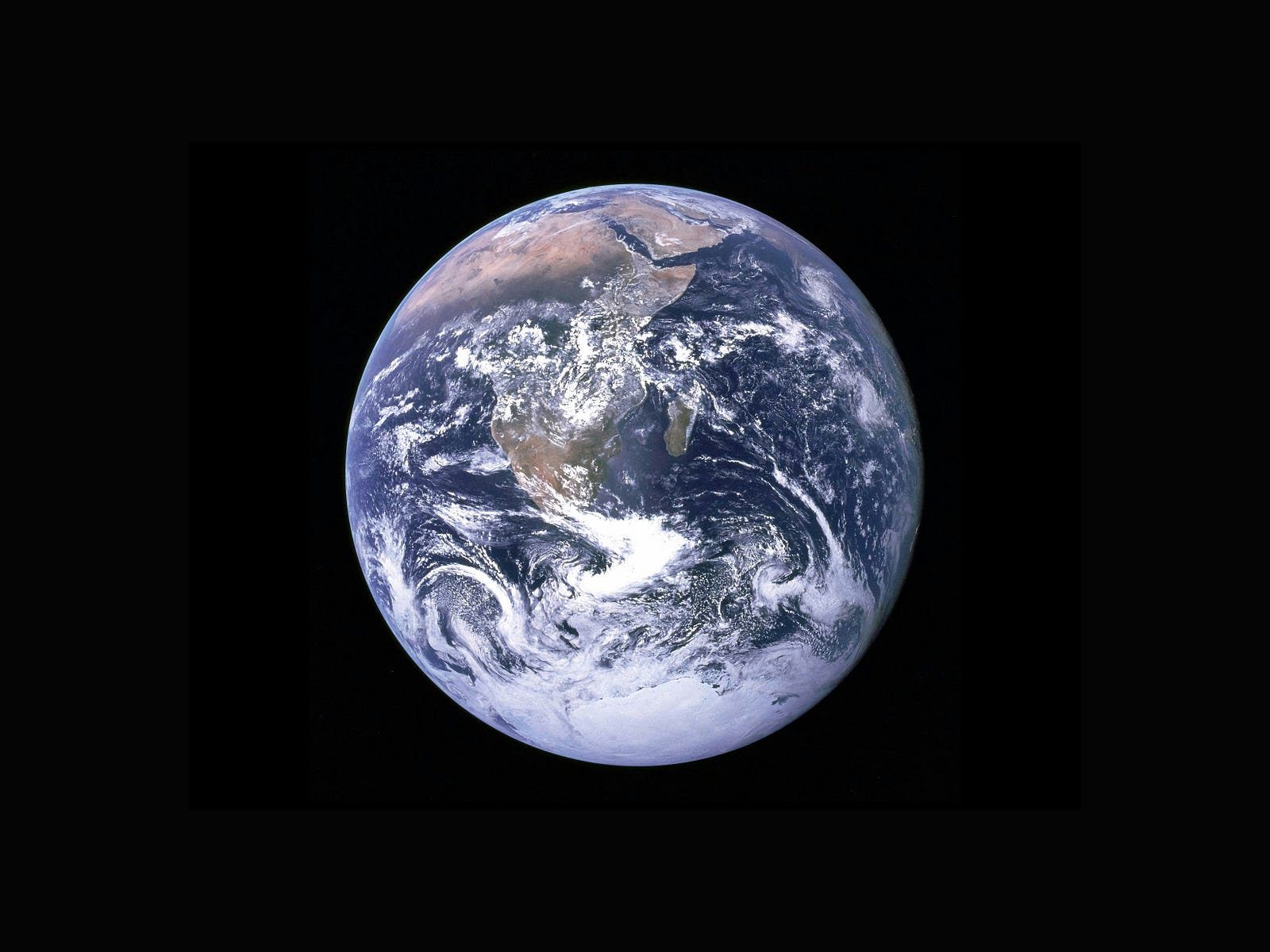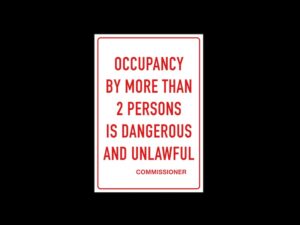Our minds can’t deal with big numbers
Since 1990 the world has emitted over 750 billion tonnes of carbon dioxide into the atmosphere. It’s difficult to imagine 750 billion of anything, let alone a gas you can’t see, smell or touch. This is the problem with the climate crisis, and ‘sustainability’ generally, or rather, the unsustainability of human behaviour. The problem is on such a massive scale that we can’t see how our behaviour feeds into the problem.
Carbon Visuals was set up in 2009 to help people ‘see’ carbon dioxide. One way they did this was to imagine emissions formed a uniform layer over the Earth’s surface. If they did, a day’s worth of current emissions would make a layer the thickness of a piece of paper. One year’s worth would blanket the planet in a 31-millimeter-thick layer. Ten years’ worth would create a planetary-sized blanket 3.1 meters thick.
While useful in helping us visualise just how much carbon dioxide we’re emitting, the Earth has a circumference of 24,901 miles (40,075 km). It’s hard to visualise a blanket 3.1 meters thick that stretches thousands of miles.
The numbers are just too big for our minds to get to grips with.
To put 750 billion tonnes of CO2 another way, consider that’s around half of all emissions produced since 1750. So in the last 34 years, we’ve produced as much emissions as the previous 240 years.

If that doesn’t put into perspective just how unsustainable the current state of affairs is, nothing will.
But again, ‘perspective’ is kind of the wrong way of putting it. Perspective of what, exactly? It’s not clear how or why we are producing such enormous amounts of emissions. Let alone identifying the steps we need to take to reduce them.
The causes
The fact we can’t see emissions makes them remarkably abstract. We know the more we emit, the greater the risk of inducing catastrophic changes to the climate. If this has become common knowledge to governments, businesses and individuals, why do emissions keep on increasing?
The fundamental issue comes down to how the economy is structured. The goal of every country is to stimulate economic growth. It was the Industrial Revolution that made sustained economic growth possible because as technology has become more sophisticated we’ve been able to increase production.
Increasing living standards have followed in the footsteps of growth. Which has been good for everyone, or at least, for plenty of people living in advanced industrial economies.
The issue with economic growth is that to achieve it, you need to produce more goods and services than you did the previous year. We use the natural world to make goods and services, either as energy inputs (80 per cent of our energy needs come from fossil fuels). Or, as resources — the physical stuff that is made into the products and services we eventually consume.
Energy and resources are processed through the economy in a take-make-use-dispose linear process. Once used, the vast majority of energy and products extracted from the Earth are disposed of as wastes.
We produce 2.12 billion tonnes of waste each year. If that waste were placed on trucks, they would go around the world 24 times. Again, it’s impossible to fathom numbers on this scale.

Then there is how we measure economic growth. GDP is designed to measure whether output has increased. You may hear that GDP grew by say two percent last year. But it’s not possible to see how economic growth is achieved, how it impacts the environment and whether it has increased well-being, which is ultimately what it’s designed to do.
The outcomes
Emissions have increased exponentially since 1990 as the global economy has grown enormously in scale. Take China, whose economy has grown at an average rate of 9 per cent a year since 1990. Its share of the global economy rose nearly tenfold from below 2 per cent in 1990 to 18.4 per cent in 2021.
That growth has consequences. In becoming the manufacturing capital of the world, China is ravenous for energy. They’re building coal power plants as quickly as possible (China accounts for 96 per cent of new coal power construction) to feed that growth. The result is that Chinese emissions have increased from 2.48 billion tonnes in 1990, to 11.4 billion tonnes in 2022. They’re now the biggest producer of emissions globally.
You can’t ‘blame’ China for the problem. After all, it’s Westerners who buy the products they produce. However, the growth of the Chinese economy highlights how emissions are an outcome of economic growth. To produce more goods and services, you need more energy and resource inputs. There’s no getting around that fact.
And when it comes to facts, the most inconvenient of all is wrapped around the size of the global economy. Since the 1970s humanity’s annual demand on the natural world has exceeded what the Earth can renew in a year. When a species takes more than an ecosystem can renew, it results in ecological overshoot.
We’re overshooting ecological limits by such a large margin that we would need 1.7 Earths to make our consumption habits sustainable.
It’s difficult enough to visualise one Earth, let alone one that has a circumference of 42,330 miles. What’s not hard to get to grips with is the fact there is only one Earth, and there will always only be one Earth. The planet is never going to spontaneously expand.

Again, the problem with overshoot is that the effects are detached from our daily lives.
We can’t see how the Amazon rainforest is turning into a savannah. We can’t see how 90 per cent of large predatory fish have been wiped out from the oceans. We can’t see how Greenland is losing 30 million tonnes of ice per hour.
Every problem is happening on a scale that is just too abstract for us to comprehend.
The options
When we place a lens on society, and our place in it, the problem is much the same.
The role of the economy is to produce goods and services that fulfil wants and needs. Ultimately, everything that’s produced is consumed in one form or another. And so, it is our behaviour, our lifestyles, our buying habits, we as a collective society are responsible for overshoot and the catastrophic environmental changes accompanying it.
The rather large issue of overshoot is the spanner in the works when it comes to current living standards. When a species enters overshoot, exit is guaranteed. That’s why the current state of affairs can’t be sustained.
There are two options when it comes to how we’re going to exit overshoot. We design our way out, or a disaster forces us out.
Disaster will translate into catastrophic environmental changes that will place us on the dark road of social collapse. Design will lead to the formation of sustainable societies that provide human needs within environmental limits (that’s the idea, anyway).
Economic growth is the thing that has led to overshoot. So if the global economy keeps on growing, it means more energy and more resources extracted from the planet, which means overshoot will get worse, and we’ll continue veering towards disaster.
That’s why there are calls to move away from growth as the foundation of the global economy and embrace a degrowth economy. The idea is that we reduce the throughput of goods and services while seeking to enhance well-being.
Degrowth is what’s required to shrink the global economy and exit overshoot by design.
If people buy less, if they start buying locally, if they stop buying into a consumer society, then it would see a dramatic reduction in environmental impacts. But seeing as we’re all under some catatonic spell that has led us to believe that consuming is the source of all happiness, it would be hard to convince people otherwise.
Governments could constrain consumption by embedding environmental impacts into prices. They could introduce high tariffs on imported products to encourage people to buy locally. Increasing prices would see demand decrease but it would take a brave (some may say, suicidal) government to take such a radical approach because people simply do not recognise how their behaviour feeds into the problem.

There is no way voters would accept such draconian, extreme measures because they feel wholly disproportionate to the problem. Any government that dared take such an approach would quickly find themselves out of government.
Living in isolation
Here we get to another fundamental problem. It’s estimated the average person knows around 611 people.
We can’t see how our actions have consequences when you multiply them billions of times over. We may know there are eight billion other people on the planet, but again, that is such a huge number we simply can’t visualise the enormous impacts eight billion people have when each individual is driven to enhance living standards by consuming more.
We’re hurtling towards a disaster we can’t see and no one will accept that lifestyles are unsustainable because they can’t see how they’re unsustainable.
And tying it all together is economic growth. The cause of this sorry mess is politically, socially and economically impossible to question, and we can’t see that, either.
Back to that question, how are we going to exit overshoot?
We chose disaster, long ago. When the disaster starts to feel like one, when living standards are falling sharply, when consumer society stops in its tracks, maybe then, people will recognise the consequences of their actions; when it’s too late to do anything about it.



